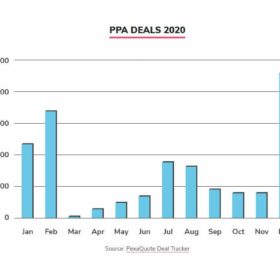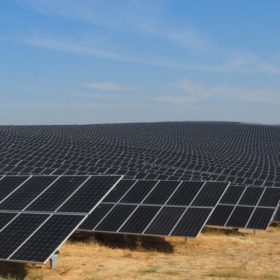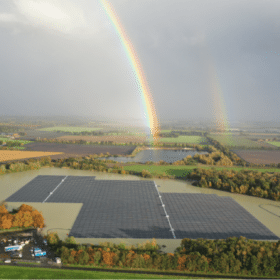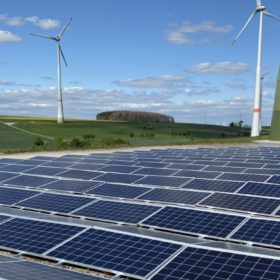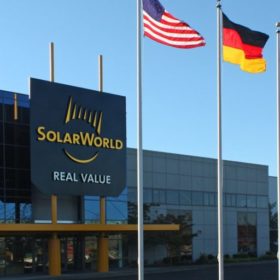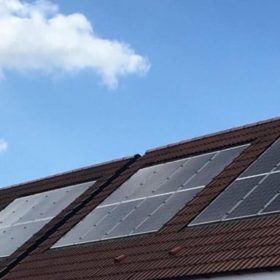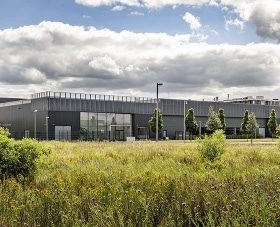Rollercoaster for the European PPA market in 2020
The Covid-19 crisis temporarily paralyzed the business for large scale unsubsidized solar projects across Europe. At the end of the year, however, demand for projects that are financed through electricity purchase agreements regained speed. Pexapark estimates that there is currently 10 GW of renewable energy capacity under signed PPAs in Europe, most of which is for solar power.
Fraunhofer ISE develops technique to produce glowing colored solar modules
The German research institute has proposed a technique based on the surface structure of the wings of the morpho butterfly to produce colored BIPV panels for facades and rooftops. The process is claimed to make it possible to color the modules with an optical effect and not with color pigments, which reduce their efficiency.
More PPA-linked big solar under development in Denmark
Luxcara and Be Green want to build 415 MW of unsubsidized solar in Denmark. The authorities are planning four solar parks, with the electricity to be sold to power consumers under power purchase agreements.
Baywa re energizes more floating PV in the Netherlands
The German renewable energy company has completed two more projects, totaling 29.2 MW, in the country.
Longi says appeal hearing for patent litigation with Hanwha Q-Cells is planned for April
In the first instance, the Düsseldorf Regional Court in Germany ruled in favor of Hanwha Q-Cells, but Longi Solar has appealed the judgment. There is also still a struggle for the validity of the patent between the photovoltaic companies at the European Patent Office. In addition to Longi Solar, REC is also reporting another partial success in the legal dispute with the South Korean photovoltaic manufacturer.
New mounting system to integrate small PV into wind farms
Switzerland’s Smartvolt has developed a special mounting system that facilitates the quick deployment of small ground-mounted PV systems at the base of wind turbines.
SunPower to close module factory in Oregon in June
The US module maker plans to start shutting down production in Hillsboro in March. Around 170 employees are affected by the closure. At the same time, however, Sunpower is examining other options for continued operation.
Eon enters UK rooftop PV business
The German energy company has acquired a 49% stake in U.K. installer Eco2solar. The British company offers solutions for commercial and residential projects.
Zinc-air batteries with non-alkaline, aqueous electrolytes
New battery chemistry developed in Germany promises to make zinc-air batteries the storage technology of the future.
Meyer Burger gets €22.5 million in public subsidies for heterojunction cell factory
The funds come, on the one hand, from the regional government of Saxony-Anhalt and on the other, from the German central government.

